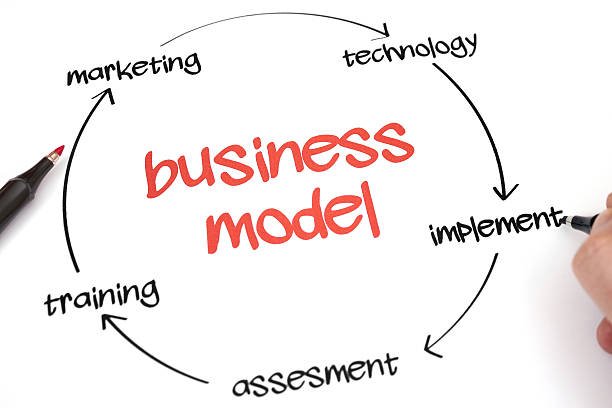1. Business Vision and Mission Clear Crane
To get your small business off the ground, the first step is to clarify your business vision and mission. A vision and mission statement defines the long-term goals and values of your business. A vision statement describes where you want to see the future, while a mission statement describes what you want to achieve in your current operations. These statements give direction to your team and inform stakeholders about your business goals. When your vision and mission are clear, your growth and expansion strategy will be more effectively planned and executed. This clarity will also help your business to be competitive in the market.
2. Market research and customer insights

Market research and customer insights are essential to running your business. It is important to understand the needs and preferences of your target audience, and tailor your products and services to their needs. Through market research it is possible to study market trends, competitive analysis and customer behavior. This insight will help you decide what improvements your products or services need and what opportunities you can explore. You want to update and improve your strategies with regular market research.
3. Financial planning and budgeting
Financial planning and budgeting are crucial to small business growth and expansion. To understand the financial health of your business, you need to analyze your revenue streams, expenses and profits. A detailed budget should include plans that support your short-term and long-term financial goals. These budgets will help you set spending limits, manage cash flow and prepare for unexpected expenses. Financial planning will also help you know how much capital to raise for growth and expansion and how to use our capital effectively.
4. Business model innovation

Innovating your business model is critical to growth and expansion. It is important to identify the limitations of your current business model and implement new ideas. This innovation can be in product development, service delivery, pricing strategy and distribution channels. Innovative business models can give you a competitive edge and help you differentiate in the market. For example, if your business traditionally relies on a brick and mortar store, you can explore your online presence or offer subscription-based services.
5. Marketing and Branding Strategy
A marketing and branding strategy is essential for the visibility and growth of your business. Effective marketing strategies should be developed to reach your target audience. These strategies can include digital marketing, social media, content marketing and traditional advertising channels. Branding is equally important; A strong brand identity establishes your business in the market and builds customer loyalty. You should make your branding efforts and consistently enforce your marketing messages to be clean and attractive.
6. Customer service and relationship building

Customer service and relationship building are key factors in business growth. With excellent customer service, you can build long-term relationships with your customers, which can lead to repeat business and positive referrals. Actively listen and respond to customer feedback, and resolve their issues quickly. To build relationships, loyalty programs, personalized services and regular communication strategies should be implemented. These efforts will enhance your brand reputation and improve customer satisfaction.
7. Use of technology and automation
Leverage technology and automation to help streamline your business operations and improve efficiency. By using automation tools like CRM systems, accounting software and inventory management systems you can simplify your daily tasks. By integrating technology, you can increase your productivity and reduce operational costs. Every business process needs to be optimized through technology so that you use your resources efficiently and achieve better results.
8. Strategic Partnerships and Alliances
Strategic partnerships and alliances provide new avenues for growth and expansion of your business. Forming partnerships with other industry players can provide your business with additional resources, expertise and market access. This partnership gives you the benefit of co-marketing opportunities, joint ventures and sharing of resources. You create alliances with complementary businesses to your business, providing opportunities for mutual benefit and growth.
9. Team Building and Talent Management
Team building and talent management is critical to business growth. Your team is the backbone of your business, so hiring and retaining talented and motivated employees is essential. Provide appropriate training and development opportunities to your team to do what you want, to grow your skills and achieve business goals. Team-building activities and creating a positive work culture are also important, increasing employee engagement and productivity. With effective talent management, you can maximize the potential of your team and support business growth.
10. Sales Strategies and Customer Acquisition
Sales strategies and customer acquisition techniques are essential to running your business. Develop effective sales strategies that address the behaviors and needs of your target audience. You should focus on lead generation, conversion optimization and sales funnel management. For customer acquisition, you’ll want to explore targeted marketing campaigns, referral programs and partnerships. Regularly monitor and analyze sales performance to improve your strategies and improve your performance.
11. Expansion planning and market entry strategy
Critical to expansion planning and development of market entry strategies. When you want to expand your business into new markets or locations, a comprehensive expansion plan should be developed. This plan includes market research, competitive analysis, financial projections and operational requirements. Market entry strategies such as franchising, licensing and direct investment should. With expansion planning, you will know what steps to take to enter new markets and how to allocate your resources effectively.
12. Product Development and Innovation
Product development and innovation will make your business competitive in the market and help drive growth. Continuous innovation is required to improve our existing products and develop new products. Analyzing customer feedback and market trends, you may want to enhance features and functionality in your products. By managing the product development process with a systematic and systematic approach, you will introduce timely and high-quality products to the market.
13. Risk Management and Contingency Planning
Risk management and contingency planning are essential to business development. Every business faces different risks and uncertainties, so these risks must be identified and managed. Risk management strategies should be developed that address financial risks, operational risks and market risks. Contingency planning helps you prepare for unexpected situations, ensuring business continuity. It helps you implement your planned risk mitigation strategies and protects against potential business disruptions.
14. Legal Compliance and Regulations
Legal compliance and regulations are critical to business growth. Want to operate your business in compliance with local, national and international regulations. This compliance helps to avoid legal risks and protect business reputation. Must follow business registration, tax compliance, labor laws and industry specific regulations. By conducting regular statutory audits and compliance checks, you are aligning your business with regulatory requirements and minimizing potential legal issues.
15. Performance measurement and continuous improvement
Performance measurement and continuous improvement are essential to business growth. Measure your business performance regularly to ensure you are meeting your goals and objectives. Want to track key performance indicators (KPIs) that reflect business performance. A culture of continuous improvement should be fostered, which regularly reviews and enhances processes and operations. Feedback loops and performance reviews allow you to improve your strategies and sustain business growth.


